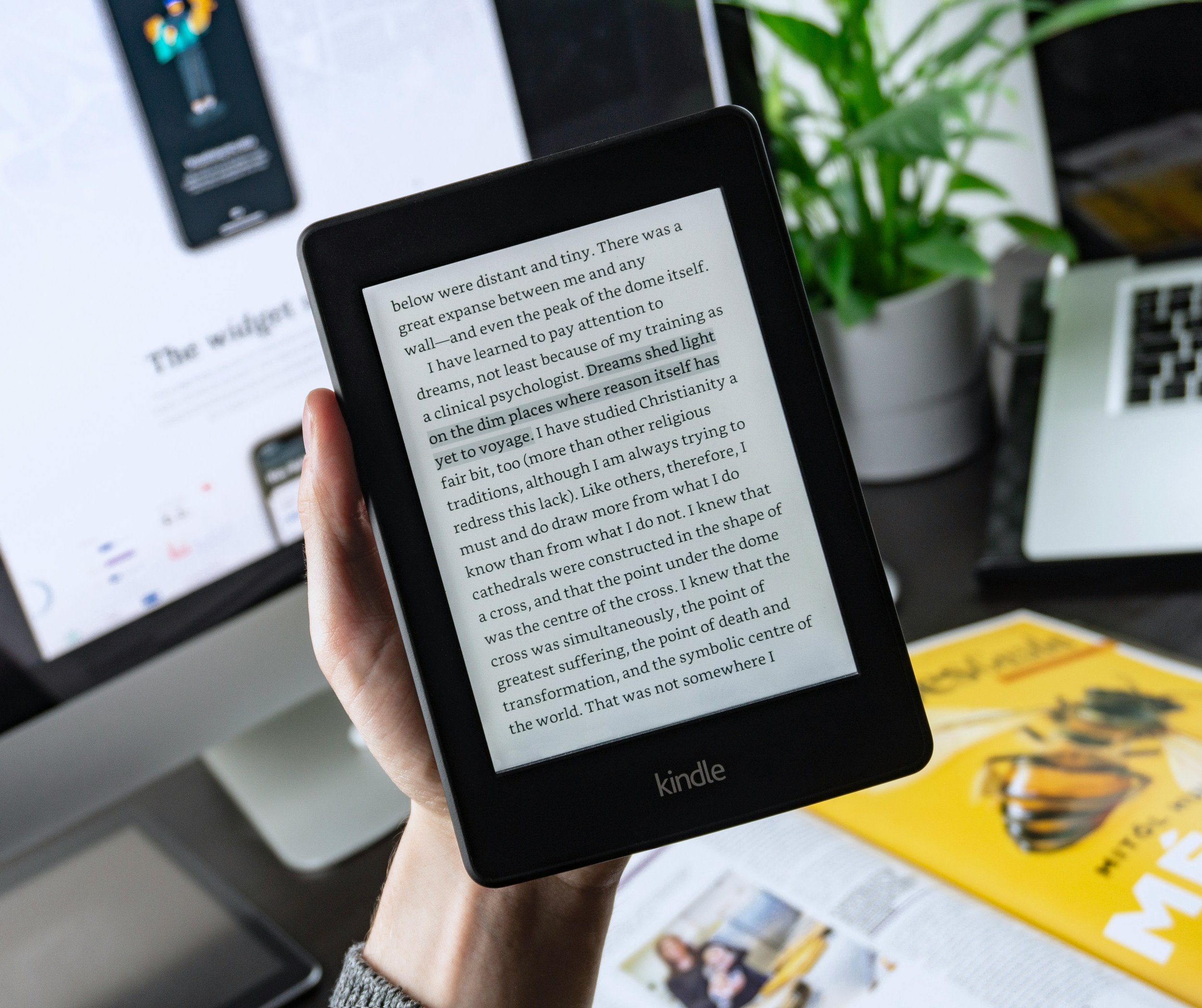Hybrid Books: Merging Audio and eBooks for a Richer Reading Experience
The phrase “hybrid book” might sound like marketing jargon at first. But the idea is surprisingly simple: it’s an eBook that includes built-in audio narration. Sometimes the narration is done by the author. Other times, it’s a single narrator or a cast of voice actors guiding the reader through the story.
Whatever the format, hybrid books offer a new way to experience text. They give the reader the choice to read, listen, or do both at once. And for many, that combination is more than just a convenience. It’s a deeper, more memorable way to connect with the words on the page.
As someone who’s spent more than a decade designing books for both print and digital platforms, I’ve seen how these formats can complement each other when they’re used thoughtfully. At Foglio Custom Book Specialists, I work with authors to create eBooks that not only function across devices, but actually make use of what digital books can do. The truth is, most authors don’t take full advantage of eBook capabilities. I wish more would. Multimedia features like audio, video, and interaction are available in the EPUB3 format, and they can open up new creative possibilities that aren’t available in print.
Why Readers Love Hybrid Books
There’s something intimate about hearing a voice while you read, especially if it’s the author’s own. The inflection, the pauses, the rhythm of speech—these elements reveal how the author hears their own work. It turns reading into a shared experience.
Hybrid books also make reading easier and more enjoyable for readers with accessibility needs or short attention spans. With audio narration synced to text, readers can highlight as they listen, pick up where they left off, or switch between reading and listening depending on the situation. You can read in the morning and listen in the car that afternoon.
One reader put it best: “It’s like being read to, but I still feel like I’m reading.”
How Hybrid Books Actually Work
To build a hybrid book, you’ll need an eBook format that supports multimedia. EPUB3 is the current standard. It allows you to embed audio files directly into the book and sync them with passages or chapters.
The catch? Not all devices support this. Apple Books is currently the best platform for hybrid books, with seamless EPUB3 playback. But Kindle devices and the Kindle app don’t support embedded audio at all. That means your book might work beautifully on an iPhone or iPad, but lose functionality elsewhere.
There are workarounds. One option is to host the audio externally and link to it from within the book. This also helps keep your file size manageable, which is important because most platforms place limits on upload size. If you’re looking to publish on multiple platforms, we can help determine which method works best. Book a free consultation if you want to talk through your options.
Using Audio Creatively by Genre
Not every book needs audio. But in the right context, it can transform the experience.
A poetry collection becomes more powerful when you hear the poet read each piece aloud. That shift in tone, the space between lines, the deliberate pacing—all of it brings added dimension.
In children’s books, audio brings stories to life. Different voices for each character, small sound effects, or music cues can make kids return to the book again and again. Interactive eBook design is especially useful here.
In memoirs, hearing the author’s voice adds emotional weight. Readers feel the story differently when they know the voice behind the words.
Even academic or instructional books can benefit from audio. Pronunciation guides, audio walk-throughs of complex diagrams, or short clips from interviews or lectures can all be embedded in EPUB3 files.
Common Pitfalls and How to Avoid Them
Device compatibility is the biggest limitation. E-ink readers like Kindle Paperwhite aren’t built to play audio. Android tablets and iPads usually handle embedded audio just fine, but it’s still important to test your book on multiple platforms. Our validation and device testing service ensures that your book looks and works the way you want it to.
Another challenge is ensuring that the audio feels intentional. If it’s poorly timed, too loud, or unnecessary, it can feel gimmicky. That’s why audio should enhance the experience, not replace the reading. We recommend using clear design cues to signal when audio is available and when it’s best ignored.
Cost is another concern. Recording audio can be time-consuming. If you’re planning to narrate your own book, a quiet space and a decent microphone might be enough. But if you prefer a professional narrator, we can help you weigh the pros and cons, and even assist with sourcing voice talent or polishing your recordings.
Should You Make a Hybrid Book?
Not every book calls for this treatment. But if you’re writing something that would benefit from a more immersive experience, a hybrid book is a great way to stand out.
They’re especially effective for:
Poetry collections
Children’s books
Memoirs or personal essays
Educational guides or tutorials
If you’ve already recorded an audiobook, integrating that narration into an EPUB3 file is a natural next step. It gives your readers more ways to engage with your work.
At Foglio, we approach publishing as a whole, not just a checklist of tasks. We think about the experience your book creates and how it can be made more accessible, enjoyable, and true to your vision. Hybrid books are one more tool to do that.
Curious if it’s the right fit for your project? Get in touch or join our free Self-Publishing Masterclass for a complete look at everything from editing and design to printing and distribution.
You don’t need to use every tool available. But it’s worth knowing what’s possible.





